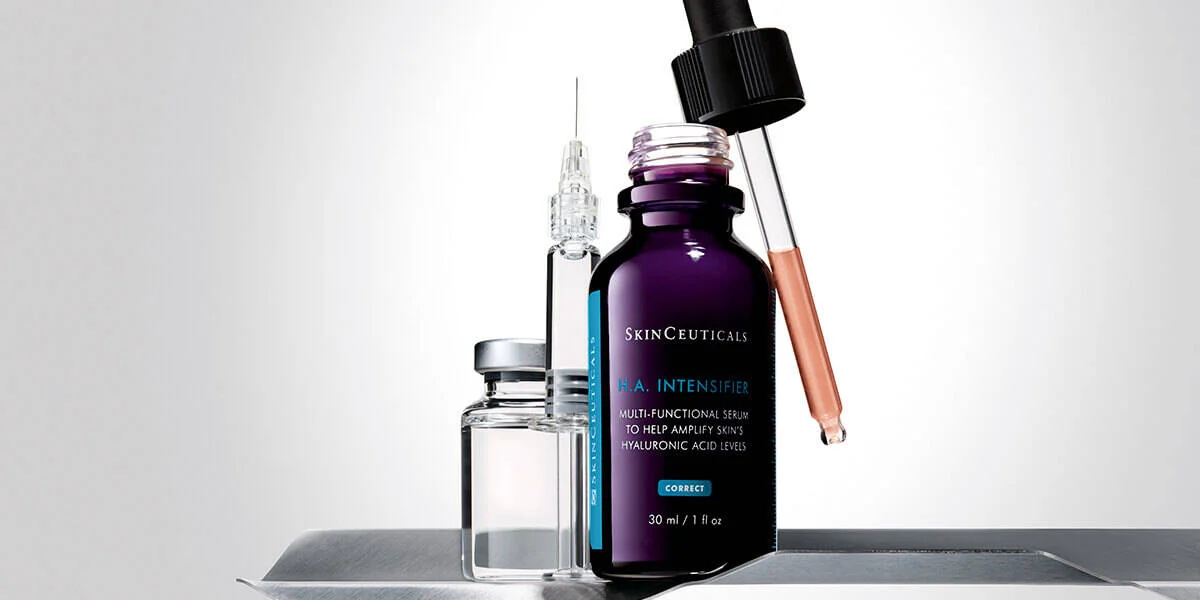Key Takeaways
-
Body image is shaped by perceptions, societal standards, and personal experiences, influencing your mental wellness, self-esteem, and overall health. By realizing how it affects you, you can start creating a more positive mentality.
-
Celebrate your body transformation by focusing on what you’ve achieved, and celebrating the little things. Taking time to reflect on how far you’ve come respects your positive self-image, empowers your confidence and increases your happiness.
-
Often, mainly through self-acceptance and working to diminish negative thinking self-esteem will increase. Shifting these kind of ideas into statements of strength and capability helps foster that self-love and mental toughness.
-
Use positive affirmations each day, and make time for self-care to help soothe and heal your body and mind. When you stop searching for perceived imperfections and start exploring your strengths, it creates a kinder perspective on what makes you special.
-
Be with positive people—and positive body media too. Whether it’s friends, family, or a support group, counting on the commitment of people around you can keep you motivated and pointed in the right direction.
-
Long-term change takes ongoing healthy behavior, flexibility in the process, and gratitude for the journey, not just the destination. By consistently setting achievable goals, you will find long-lasting success and growth as a person.
Celebrating your body transformation isn’t just about acknowledging the weight loss. Whether you achieved it through weight loss, muscle gain, or just being healthier overall, those changes are evidence of your hard work and determination to be better.
Feeling good in your skin is about more than numbers on a scale or clothing size—it’s about recognizing your achievements and embracing how they’ve shaped your self-image.
It’s possible the path has not been smooth, but all of those steps have led you to a more confident, healthier you.
Understanding Body Image
Body image is the perception, thoughts and feelings we have toward our body…especially our physical appearance. It’s a reflection of personal attitudes that have been influenced by internal and external factors. The role of media, societal standards, and personal experience can’t be ignored either.
For instance, while traditional media has long perpetuated unrealistic beauty standards, social media heightens the effects by encouraging harmful comparison through curated, filtered content. Experiencing appearance-related bullying can contribute to body dissatisfaction. This issue is linked to mental health consequences and can even lead to the development of eating disorders.
Negative body image arises from focusing on perceived imperfections or failure to live up to unachievable ideals, leading to feelings of disappointment and vulnerability. Positive body image encourages self-acceptance, recognizing an imperfect body while admiring special features.
Our body image is not permanent — it’s always changing. Positive experiences and negative experiences are both nuanced and able to impact the way we perceive in multifaceted ways—sometimes at once.
We know that body image plays a significant role in mental wellness, including self-esteem and overall health. When we feel good about our bodies, we’re empowered to be more confident and make healthier decisions—physically and mentally.
Longstanding research highlights that focusing too much on appearance can harm mental health, making it vital to build a balanced perspective.
The Journey of Body Transformation
The journey of body transformation is a unique experience that can be very personal and complex. By embracing the inner work Resilience Journey is helping you accomplish, you can discover how to build your own resilience and practice self-compassion in your transformation process.
Along this journey, the culture you immerse yourself in and the people you choose to be around make all the difference.
Defining Transformation: More Than Physical
Getting these habits—mindful eating, joyful movement, and restorative sleep—down as a mutually supportive routine lays the groundwork for enduring change. For instance, it’s possible to frame rest days as purposeful recovery, which balances mental and physical health.
Flexibility—in terms of who joins and when—is just as essential. Your needs may shift, so staying open to adjustments ensures progress aligns with your evolving goals.
Finally, gratitude simply makes you happier. Taking time to appreciate your body’s daily efforts—like walking or hugging—builds a deeper sense of respect.
Daily affirmations and positive self-talk only build on this idea. Reframing “I messed up today” to “I’m learning and growing” cultivates self-compassion.
Setting Realistic Goals
By setting realistic, obtainable goals you avoid burnout and are able to remain excited about your progress. Knowing what your triggers are, whether that be stress or social pressure, means you can plan for obstacles and get back on track gracefully.
Having those coping strategies, maybe it’s journaling or a quick walk, will help navigate the emotional bumps in the road. Professional support, whether via therapy or coaching, encourages deeper reflection and transformation.
Take heart knowing that setbacks are as much a part of the process as successes, not the conclusion of it.
Embracing the Process, Not Just the Outcome
My transformation story is like no one else’s transformation story. Sharing your transformation journey brings you community, and listening to others’ journeys helps you realize that there’s no one “right” way.
Resilience, cultivated through ongoing effort and attention to personal well-being, is what really inspires transformative change.
Celebrating Your Body Transformation
Body transformation is more than just a physical journey. It means acknowledging, celebrating, and approaching the mental, emotional, and spiritual development that comes along with the process. Celebrating this journey not only reaffirms all the effort you’ve put in, but it works to cultivate a better relationship between you and your body.
Acknowledging progress, no matter the amount, can help build that confidence and self-acceptance on a more profound level.
Why Celebrate Your Transformation?
By taking the time to celebrate your transformation, you affirm the good habits, hard work and dedication you brought to the table. It is no longer just about reaching a destination, but celebrating the journey towards it. Recognizing these mini victories, even if it’s just celebrating yourself for drinking your water goal or stretching after a long day, creates momentum.
As an example, 80% of women say they feel more confident when they wear an outfit they love. As you can see, learning to celebrate every success even if it’s a small one will help raise self-esteem and develop confidence.
How to Acknowledge Your Progress
If you’re overwhelmed, you can begin by practicing gratitude. Writing down three things your body allowed you to do each day—like walking your dog or hugging a loved one—shifts attention to its capabilities. Practicing self-compassion is an important step, too.
Self-compassion is another huge, powerful step. When things go off track, try to replace negative self-talk with kindness and understanding to yourself. Let go of negative feelings about times when you wavered and focus on what’s ahead.
Even small amounts of gentle movement, like yoga or walking, help you stay connected to how your body feels. It is a joyous celebration of your enhanced strength and flexibility!
Documenting Your Journey Meaningfully
Whether you document your journey through pictures, a journal, or even a voice memo, it will help provide a concrete representation of how far you’ve come. Include moments that highlight both physical and emotional milestones, like completing a tough workout or feeling proud of your reflection.
This will help you keep your transformation journey personal and meaningful.
Embracing New Confidence and Self-Image
Transformation goes beyond the physical; it’s about fostering self-acceptance and changing the way you see yourself, which is crucial for body image positivity. Building this self-assurance involves understanding key aspects of self-confidence, its connection to mental wellness, and nurturing a healthier mindset.
What is Self-Confidence?
Self-image is how you see yourself, the way you define yourself and the story you tell yourself. It isn’t so much about getting it right as it is about the confidence that you have in your ability to approach adversity and recognize your gifts.
When you experience your own body transformation, this confidence is amplified even more as you begin to see the fruits of all your hard work. Recognizing these little victories—the accomplishment of a new workout goal, a new-found comfort in your favorite clothes—feeds this positive cycle.
Confidence is a skill, like any other, that develops gradually which is why confidence isn’t often an immediate outcome.

The Link Between Body Image and Confidence
As we know, body image can really affect our confidence. Your self-image has the power to move you forward or hold you back. Identifying unrealistic representations on screen is extremely important.
They create unattainable ideals that distort our realities. Instead, praise your body for all it allows you to do each day, from movement to feeling strong to creating life. This change makes a huge difference in creating a new confidence and self-image and conditioning in positivity.
Cultivating Self-Acceptance
Self-acceptance means kindness toward yourself. Self-acceptance is not being lazy or giving up. Meet your negative self-talk with over-the-top compassion by viewing mistakes as a part of learning.
Pleasurable practices can help. Even something simple, such as gentle stretching or self-massage, encourages gratitude for your flesh vehicle. Self-forgiveness, self-compassion, and patience are key in overcoming your all-or-nothing mindset and developing a positive self-image.
Challenge Negative Thoughts
Those judgments almost always come from internalizations of external beauty standards. Challenge these patterns and redirect your energy to moving forward and being kind to yourself.
Note that developing confidence takes time, incremental improvements, and tenacity.
Practical Strategies for Self-Love
Embracing your body transformation requires self-love from the inside out. It’s not just about being trendy, it’s about promoting your wellness, developing a positive mindset, and finding confidence within through meaningful self-care practices.
Here are some of these strategies that can help you practice self-love in a more meaningful and impactful way.
Practice Daily Affirmations
Incorporating healthy body affirmations into your regular self-love practice is a great way to build a positive self-image. Statements like “I am strong and capable” or “My body is deserving of care” can shift your mindset over time.
Combining these with mindfulness practices or gratitude journaling makes them even more effective. Start small — for instance, write down one affirmation in the morning, then think about what that affirmation brings to your life that day.
This daily practice promotes self-compassion and lays the groundwork for gratitude.
Prioritize Self-Care Activities
Addressing your physical and mental health needs is an immediate salve of self-love. Begin with the basics—making sure you are sleeping, hydrating, and moving in a way that feels good to you.
Gentle activities like yoga or stretching can reconnect you with your body, while small wins, such as making time for rest, deserve celebration. Things like including touch, as in massaging lotion into your skin, can help generate a greater recognition of everything your body has gone through.
Focus on Strengths, Not Flaws
When you point your focus toward everything your body does each day—move, breathe, experience love—this shines a light on your body’s abilities. Treat yourself like you would treat your best friend, forgive yourself for small mistakes and backslides.
Gratitude is a powerful tool that can help you reframe your perspective, so take time to appreciate progress, both big and small.
Surround Yourself with Positivity
Filling your life with positive people and inspirations gives a big boost to self-love. This means challenging unrealistic body images in the media and building a community that embraces you for who you are.
Positive environments will have a long term effect on your self-image and confidence.
Building a Supportive Environment
Starting a body transformation journey is an intimate process that fosters self-acceptance and body positivity. Building a supportive environment cultivates not just emotional and physical wellness but also the development of confidence, resilience, and social connectedness throughout your ongoing journey.
Seek Support from Loved Ones
Your immediate network of friends and family may be one of the most powerful pillars of support. Like all key partners, share your goals and accomplishments openly! Whether you completed a hydration goal or increased your daily physical activity—send them a message. Their recognition and appreciation of your work can help raise your mood and restore your resolve.
Establishing those boundaries is incredibly important. Communicate to them what would be the most supportive approach for you, whether that’s verbal encouragement or simply offering a compassionate ear.
Find a Community
Finding kindred spirits who truly get what you’re going through is one of the best feelings in the world. Join local or virtual communities with aligned interests, such as health and wellness organizations, yoga clubs, or Facebook groups. Their collective passion and experiences will lift you up.
Their actionable advice, including mindfulness practices and journal exercises, helps you stay on track. Communities further encourage positive affirmations, an immeasurable blessing during times of struggle and when trying to stay on track mentally.
Consider Professional Guidance
Often, if you could nail down that expert advice, getting it can be a game changer. Experts like nutritionists, personal trainers, or therapists can help you customize strategies for your specific challenges and goals. A wellness coach may suggest reconnecting with your body using joyful, non-competitive movement.
Take a class in dance or yoga and focus on celebrating what your body is capable of! They could include instruction in media literacy, training you to discern and weed out idealized images that distort how you see yourself.
Sustaining Your Transformation
Developing new, permanent ways of interacting with your body and self-concept means creating changes that go beyond the physical transformation. It’s about cultivating body acceptance practices and attitudes that help you stay true to your vision, fostering a healthy relationship with your unique beauty even as you develop the assurance that comes with success.
1. Maintaining Healthy Habits
This is where consistency becomes so important to sustaining your transformation. Fostering a healthier relationship with your body can be as simple as taking these small, intentional actions each day.
Make hydration a goal and try to drink eight 8-ounce glasses of water a day. Incorporate short bouts of walking to increase energy and improve mood. These quick adjustments add up!
Prioritize your mind and body. Create space for nourishing foods, physical activity, and healing sleep. Acknowledge these little victories – whether that means preparing a healthy meal or being consistent with a post-workday stretch.
These relatively simple actions help to illustrate and reinforce your commitment to health without burdening or overwhelming you.
2. Adapting to Changes
Your body will change, and figuring out how to work with it is what’s key. Learn to stay attuned to its signals and model self-compassion when you get off course.
If you skip a workout here and dip into the comfort food there, cut yourself some slack—this is all part of the process. Paying attention to your body’s needs, whether that means needing more sleep, more rest, or something more physically demanding, keeps you present and engaged.
3. Practicing Gratitude
Gratefulness has the power to transform your perspective on your experience. Rather than obsess about what you’d like to alter, celebrate what you enjoy — or even love — about your body.
Short daily affirmations, such as “I’m strong and capable,” feed this narrative. When you center your transformation around what makes you strong and different, you’ll cultivate a stronger love for your transformation.
4. Setting New Goals
After achieving a milestone, establish new, achievable objectives that foster self-acceptance and body positivity to continue your ongoing journey. Whether it’s running a 5K, learning a new skill, or maintaining healthy habits, these goals provide direction and motivation.
5. Remembering Your “Why”
Remember your why—those initial inspirations and motivations for beginning this journey. Was it so you could feel less tired, more confident or healthier?
Remembering your “why” will keep you focused on the bigger picture and ensure that you don’t lose sight of what values should drive you.
Overcoming Setbacks and Challenges
Life after navigating such a dramatic body transformation presents a very new and different set of highs and lows. Setbacks are always gonna happen though, that’s just part of the process. What you do during those setbacks is what will set you apart.
By identifying triggers, developing effective coping mechanisms, practicing self-compassion, and seeking help when needed, you can build resilience and sustain your progress.
Identifying Triggers
Determining what is behind the setback is often the best first step toward overcoming them. Triggers can include stress from work or home, or even the act of comparing yourself to others on social media.
Taking the time to recognize when your inner critic gets louder after you’ve been on a platform filled with perfectly curated images is just one example.
Take time to reflect on these instances to look for trends. This awareness helps you take proactive steps, such as limiting exposure to triggering situations or shifting focus to activities that reinforce positivity.
Developing Coping Mechanisms
Once these triggers are found, it’s important to be equipped with strategies. Simple actions, like committing to short walks when stressed or journaling about daily wins, can help you regain focus.
Finding ways to recognize and celebrate progress, even if it’s small, helps build that culture of positivity and success. For instance, drinking enough water or stretching after a busy day are achievements worth noting.
These practices make good markers of your continued commitment.
Practicing Self-Compassion
So, above all, be kind to yourself. Instead of being hard on yourself, be compassionate with yourself, particularly during the more difficult days.
Just 20% of us are satisfied with our body image, so you aren’t alone in this battle. Concentrate on appreciation for what your body can do each day—whether that’s walk, run, breathe deeply, or simply hug a family member close to you.
Taking on this mindset cultivates autonomy, self-respect, and pride unapologetically.
Seeking Professional Help When Needed
If the challenges seem too much, connect with a mental health professional, who can equip you with tools and coping strategies suited to your individual needs.
Licensed therapists or coaches can assist you in reframing any negative thinking patterns and establishing healthy, supportive habits.
With the proper support, ageism can be overcome and mental and physical health can be restored.
Inspiring Transformation Stories
Celebrating body transformation should not just center physical accomplishment. It’s a celebration of individual transformation, perseverance, and the magnificent ability of steady, incremental progress to work wonders.
By embracing these journeys, we can uncover lessons that inspire and encourage others to pursue their own paths to well-being.
Sharing Personal Experiences
Personal stories are a great way to paint powerful pictures of what the transformative journey looks like. One participant, Sarah, a 38-year-old mother of two, started by taking short, daily walks and practicing mindful eating.
Little by little, these adjustments made it possible for Margaret to adopt a much healthier lifestyle and gain the confidence that she once had in her body. Sharing these experiences helps to build community.
Most importantly, it inspires others to act by showing them that transformation is possible, even if the challenge ahead feels overwhelming. It’s these relatable moments, like celebrating the ability to climb stairs without exhaustion or fitting into a favorite outfit again, that make every step worthwhile.
Highlighting Diverse Journeys
Transformation is personal, individual, and different for each and every one of us, and that’s the beauty of it. While the goal for one person might be losing weight, it might be increasing strength or flexibility or improving mental health for someone else.
James, a 50-year-old elementary school teacher, found that his weekly sessions with the yoga instructor did wonders for his stress management, posture, and overall health, both physical and mental.
Promoting these varied, creative approaches helps reinforce that improving quality of life should take precedence over what our society has been conditioned to expect. This diversity serves to remind us that there is no single right answer, and each individual journey is perfectly acceptable.
Emphasizing the Power of Resilience
The truth is, building resilience is often the bedrock for achieving sustainable transformative change. Roadblocks will always be present, but commitment and perseverance are what truly set you apart.
Celebrating small wins, showing yourself grace when things don’t go according to plan, and relying on a positive friend or crew are all key tactics.
Whether pulling through failures or pushing back against imposter syndrome, resilience makes room for renegade progress over perfect execution. This mindset doesn’t just cultivate tangible transformation; it fosters a long-term path toward improved health.
Conclusion
Your body transformation is just as much about who you are now. It’s about celebrating who you are on your path to becoming the best version of yourself—not stifling who you are. Each mini victory and each experience through this journey serves as stabilizing blocks to create long-term self-love and maturity. You’ve done the work, overcome obstacles and emerged as a better version of yourself.
Honor where you’re at, celebrate the journey you’ve taken, welcome that new confidence and self-image you’ve created. Don’t stop there, though—continue pouring energy into people and habits that help you thrive. This your journey, and she’s beautiful in every second.
Join us in continuing to appreciate yourself and your journey. Personal growth doesn’t end at this redemptive point. Whatever your concern, just keep pressing ahead, and may this be the beginning of something even more wonderful. We just know you’re going to rock it!
Frequently Asked Questions
What is body image, and why is it important?
Your body image is the mental picture you have of your body and your feelings about that picture, which is crucial for fostering self-acceptance. A positive body image not only enhances confidence and self-esteem but also contributes to mental wellness, allowing you to embrace your unique beauty and celebrate your transformational journey.
How can I celebrate my body transformation?
Celebrate your body transformation by recognizing your body image struggles and weight loss progress, setting new goals, and rewarding yourself with new experiences and exciting wardrobe staples. Surround yourself with body positivity and take time to appreciate how far you’ve come on your personal journey. These little celebrations foster self-empowerment and keep you pushing through to the next big milestone.
How do I embrace my new confidence after a body transformation?
Take the time to truly appreciate the goals you’ve reached and the effort you’ve invested in your transformational journey. Establish a routine of daily affirmations and body positivity, as self-esteem and confidence stem from valuing your unique beauty and feeling proud of your ongoing journey.
What are practical ways to practice self-love?
Just begin with small steps, like using affirming self-talk, practicing gratitude each day, and making self-care a priority to foster self-acceptance. Cultivate an environment in which you explore and indulge in the things that bring joy to your life and mental wellness. This self-love is what’s going to help you maintain that positive attitude and confidence.
How can I overcome setbacks during my transformation?
Setbacks are to be expected on your transformational journey. Re-evaluate your goals, lean on your support system of friends or other professionals, and remember to foster self-acceptance while staying patient and rewarding yourself with small but steady progress.
How do I sustain my body transformation long-term?
Stay on track with good practices such as a healthy diet, physical activity, and managing stress for overall mental wellness. Consistency is key in fostering a healthy body image and maintaining a positive attitude throughout your ongoing journey.
Can sharing my story inspire others?
You’re totally right! Sharing your transformation story can foster body positivity and empower others on similar journeys. It creates community, encourages introspection, and fortifies your own confidence and pride in your unique beauty.





















